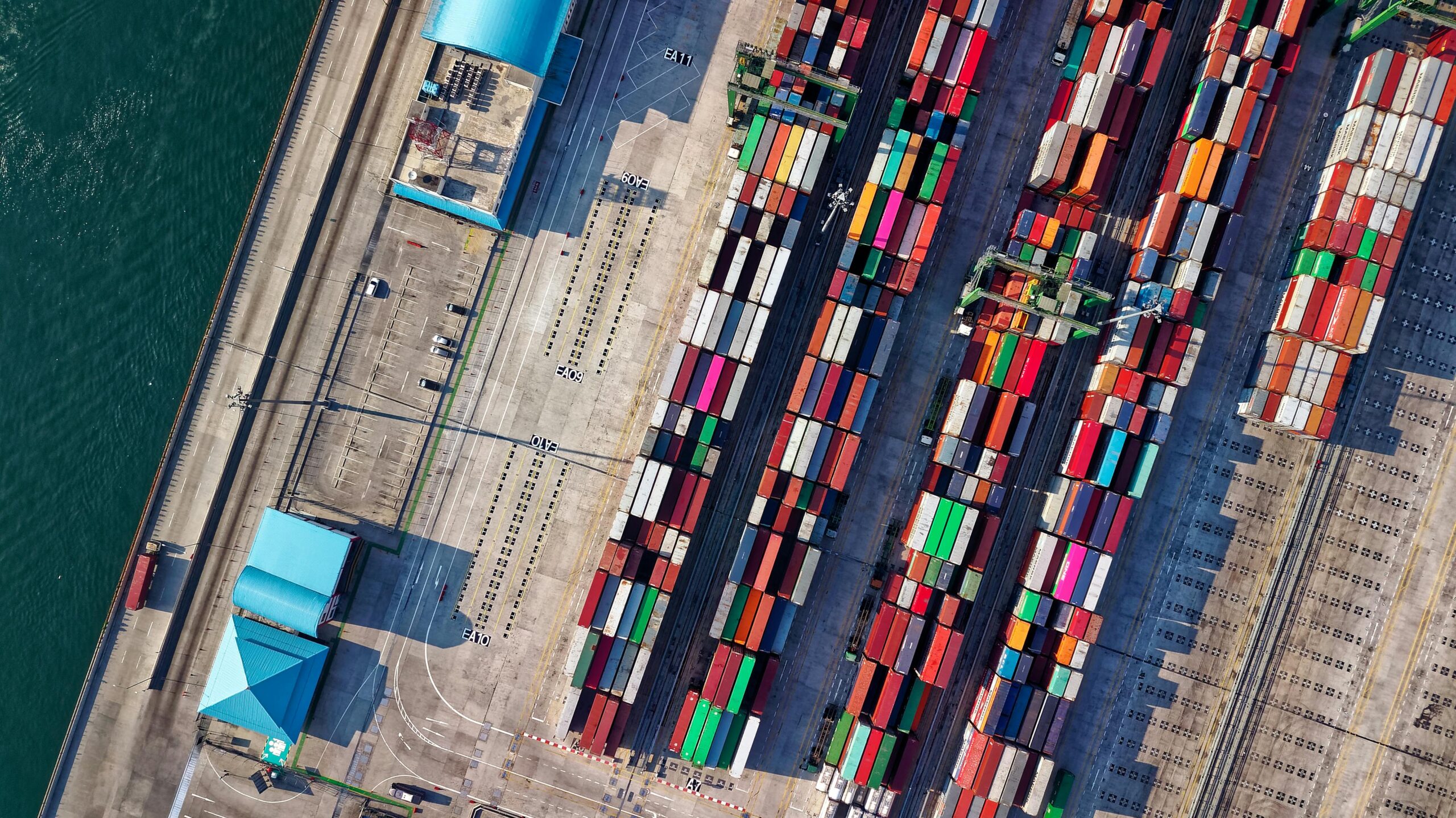

Supply chains are under more pressure than ever. Climate change is no longer a distant concern—it’s disrupting businesses right now. From floods shutting down factories to wildfires delaying shipments, extreme weather events are hitting supply chains hard. Companies that aren’t prepared are seeing major losses, while those who plan ahead are staying operational even in tough conditions.
How Extreme Weather Affects Supply Chains
Weather-related disruptions can cause massive setbacks. Here are some of the biggest ways extreme conditions impact supply chains:
- Severe storms and hurricanes can shut down ports, damage warehouses, and delay shipments for weeks. Hurricane-related port closures in the U.S. alone cost businesses billions annually, with supply chains taking weeks or months to recover.
- Wildfires lead to road closures, air quality issues, and supply delays, especially in key manufacturing regions. The 2025 California wildfires disrupted logistics across the western U.S., affecting deliveries for months.
- Floods destroy crops, cut off transportation routes, and cause raw material shortages. Major floods in China and Europe have caused long-lasting supply shortages for global businesses in recent years.
- Droughts impact water-intensive industries like agriculture and semiconductor manufacturing, driving up costs. Semiconductor production, which relies heavily on water, saw delays and shortages in 2021 due to water restrictions in Taiwan.
- Extreme temperatures cause logistical challenges, affecting temperature-sensitive goods like food and pharmaceuticals. Heat waves have led to refrigerated truck failures, spoiling perishable goods before they reach their destinations.
The U.S. is expected to face a significant rise in weather-induced supply disruptions over the next 15 years, more than any other country. Since 1980, the U.S. has experienced 403 weather and climate disasters where overall damages reached or exceeded $1 billion. With climate-related risks increasing, businesses must rethink their supply chain strategies to stay operational.
Strategies to Reduce Climate-Related Risks
Companies that take a proactive approach to risk management are the ones that stay ahead. Here are some practical steps businesses can take to build resilience into their supply chains:
1. Diversify Suppliers and Manufacturing Locations
If all of your suppliers are in one region, a single extreme weather event could bring operations to a halt. Working with multiple suppliers across different locations reduces this risk. Similarly, having alternative production sites can keep operations running even if one facility is impacted.
The economic risks of climate change to global trade are predicted to be around $81 billion, rising to at least $122 billion when considering related economic activities. A diversified supplier network is one of the most effective ways to minimize such financial exposure.
2. Strengthen Supplier Relationships and Communication
Building strong partnerships with suppliers ensures better coordination during disruptions. Companies should maintain open communication, understand their suppliers’ disaster preparedness plans, and collaborate on risk mitigation strategies. Businesses that work closely with suppliers can quickly shift production or distribution strategies when disruptions occur.
3. Invest in Inventory Buffers
Just-in-time inventory management is cost-efficient, but it leaves businesses vulnerable to unexpected disruptions. Holding strategic inventory reserves of essential products and raw materials can prevent production halts during supply shortages. While maintaining excess inventory requires more storage and capital, the benefits of business continuity often outweigh the costs during extreme weather events.
4. Improve Logistics Flexibility
Relying on a single shipping route or transportation mode is risky. Businesses should work with logistics partners to develop backup plans, such as alternative shipping routes, different carriers, or multi-modal transportation options. Companies that integrate flexibility into their logistics can avoid bottlenecks when natural disasters disrupt primary shipping lanes.
5. Assess Facility Risks and Strengthen Infrastructure
Warehouses, production sites, and distribution centers should be evaluated for climate-related risks. Investing in flood defenses, fireproofing measures, and temperature-controlled storage can prevent costly damages and downtime. Many global corporations are now relocating key distribution hubs away from high-risk areas to prevent long-term disruptions.
6. Monitor Weather Trends and Plan for Long-Term Changes
Some regions are becoming more vulnerable to extreme weather, while others may remain stable. Businesses should analyze climate data and consider shifting operations to locations with lower long-term risk. Companies that use climate projections for site selection will be better positioned to minimize disruptions in the coming decades.
The Role of Technology in Supply Chain Resilience
Technology is making it easier to predict, prepare for, and respond to climate disruptions. Here are a few key tools businesses can use:
1. AI-Powered Weather Forecasting
Advanced weather prediction models powered by artificial intelligence (AI) provide real-time alerts and long-term forecasts. This helps companies make informed decisions, such as rerouting shipments or adjusting inventory levels ahead of disruptions.
Early adopters of AI-enabled supply chain management have achieved a 15% reduction in logistics costs, a 35% improvement in inventory levels, and a 65% enhancement in service levels. AI-driven decision-making can help businesses react faster to unpredictable climate disruptions.
2. Supply Chain Visibility Platforms
Cloud-based platforms provide real-time tracking of shipments, supplier performance, and potential risks. If a delay or disruption occurs, businesses can quickly identify alternatives and minimize downtime.
In a 2021 survey, 40% of supply chain industry professionals reported integrating cloud computing and storage technologies into their operations. These platforms allow companies to monitor their supply chains in real-time, making them better equipped to handle sudden disruptions.
3. Blockchain for Supplier Transparency
Blockchain technology enhances supply chain transparency by providing an immutable record of transactions. This makes it easier to track supplier compliance, verify sustainable sourcing, and manage disruptions effectively. Businesses that implement blockchain can improve accountability and prevent fraud or delays in their supply chains.
4. IoT for Real-Time Monitoring
Internet of Things (IoT) sensors help monitor warehouse conditions, track shipment locations, and detect early signs of disruptions. For example, temperature sensors in refrigerated trucks can prevent spoilage during extreme heat waves. Companies investing in IoT solutions improve their ability to react to sudden climate changes affecting their supply chains.
Partnering with Contguard for an Uninterrupted Supply Chain
A proactive approach to supply chain resilience includes working with technology-driven partners like Contguard. Contguard provides real-time cargo monitoring and risk management solutions, helping businesses maintain visibility and control over their shipments. By leveraging AI-driven insights, businesses can anticipate potential disruptions and take corrective actions before problems escalate.
With Contguard’s platform, companies can track shipments globally, analyze environmental risks, and optimize routes based on real-time data. This level of transparency ensures businesses can prevent costly delays, safeguard sensitive cargo, and maintain an uninterrupted flow of goods—even during extreme weather events.
Preparing for the Future
Climate change is an ongoing challenge, but businesses that take action now will be better positioned for long-term success. Resilient supply chains don’t just protect companies from losses—they also build trust with customers, investors, and partners.
The 2025 MHI Annual Industry Report indicates that 74% of supply chain leaders are increasing their investments in supply chain technology and innovation, with 90% planning to spend over $1 million. Businesses that prioritize resilience today will secure their supply chains for the challenges ahead.
Conclusion
Climate change is already impacting supply chains, and disruptions will continue. Companies that prepare now by diversifying suppliers, improving logistics, and using technology will stay ahead. The businesses that take action today will be the ones that keep running smoothly, no matter what the weather brings.
Image credits: Photo by Tom Fisk: https://www.pexels.com/photo/aerial-view-photography-of-container-van-lot-1427107/


